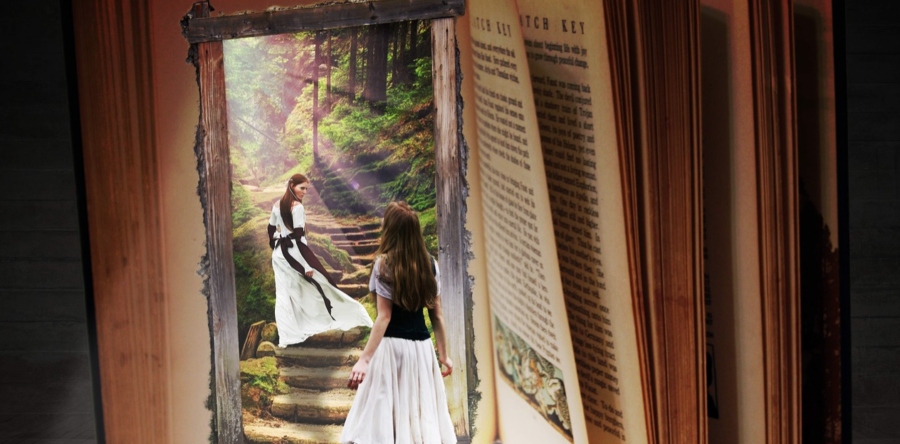Winter is upon us, and with the cold and snow outdoor play time for children can be cut short. When looking for something to occupy the kids, I suggest reading. When reading is mentioned, parents and caretakers tend to have a visceral reaction. Don’t worry, I’m a librarian and I’m here to help. It is important that children read and are read to. This may sound like a simple statement, but it’s amazing the amount of people who don’t know why or how to help children do it. Again, I’m a librarian and I’m here to help. First, there are some things you should know.
When a child starts kindergarten, they should know about 30,000 words. This number sounds HUGE, I know, but it is incredibly important. Children who don’t know at least 30,000 words when they begin kindergarten may be developmentally behind those who do. School aged children who read (or are read to) during the summer months may gain up to a month’s worth of reading ability over the child who doesn’t. At a certain point, that child who doesn’t read (or wasn’t read to) may never catch up to the child who does. Below is a video to prove my point. This video differentiates between low income children and middle income children, but the results will be the same no matter how much money you have.
Children from a middle and upper class family do have some built-in benefits; they may go on vacations during breaks to museums and monuments, or other accidentally educational facilities, while lower income children may not. That being said, there is an institution in this country that exists to provide free services to anyone who sets foot through its doors; it’s called the public library.
So you have a baby in front of you, and you know that it’s important to read to it, so what do you do? What do you read? It’s a baby, do they even understand you?
Now that I’ve sufficiently terrified you, let’s talk about some of the questions that I’ve seen and been asked in the library, and that you probably have as well.
Where do I start?
I suggest you start with a program called 1,000 Books Before Kindergarten. This program encourages parents and caretakers to read to their children as often as possible, if not every day. Again, this sounds like a big number, but if you read one book to your child every day for four years, you will have read 1,460 books to them in four years. As busy as we all are, I hope that we can find a few minutes to read our children one book before bedtime.
Another thing you can do is check out your local library. I’m not just pushing the library because I work there, I’m pushing it because libraries help foster lifelong learning (that’s our slogan, at least in Connecticut). Check the library for baby and preschool story times, play dates, STEAM programs, and book clubs. Let the library do half of the work for you. It’s through libraries that the education gap that can go hand in hand with the income gap (like we saw in the video) can be bridged.
My kid reads the same books over and over, how do I get him/ her to read real books?
I hear this at least once a day. Literally. I have been hearing this on average, five days a week, for five years, and here’s the answer: THERE’S NO SUCH THING AS REAL BOOKS. If a child continuously reads Captain Underpants, Diary of a Wimpy Kid, Rainbow Magic Fairies, or something along those lines, let them do that. Let me break it down for you: schools are generally a good thing. We send our kids to school, they learn, and then they go out into the world and contribute to society, but here’s what school can also do (please note I said can, it doesn’t always happen): kill a child’s love of reading. Through school, kids can begin to associate reading with papers, tests, homework, and bad grades. If a child finds joy reading Captain Underpants, let them read it over and over again until something else catches their interest. That isn’t to say that you shouldn’t try to squeeze in a Magic Treehouse every now and then, but please do not force Captain Underpants out of their hands; eventually they’ll move on by themselves.
My child has difficulty reading, so they don’t want to.
Reading difficulty is very common; if there isn’t a medical reason for it (and sometimes there is, so please consult your doctor), I have a suggestion: audiobooks. Find a book and the corresponding audiobook and allow the child to listen to the audiobook while following along in the physical book. Audiobooks, when narrated properly, can be as exciting as any movie; that excitement may foster a child’s want to read. Hearing words spoken and seeing them printed may build a child’s confidence in their reading ability.
Speaking of confidence, that’s another reason children ultimately struggle with reading and there’s a fun way to deal with that: therapy dogs. If you’ve never heard of a therapy dog, it’s a trained dog who brings calm and peace to others. Therapy dogs are utilized in every setting from hospitals to college campuses during finals week. Allowing kids to be heard (by the dog) without being corrected and judged can go a long way toward building their confidence.
I understand that finding time to read to your children in the craziness of work, dinner, laundry, sports practice, and all of the annoying things that pop up during the day, can be difficult, but when you consider that your child may be behind on their first day of kindergarten, or may fall six months behind their classmates who do read, it’s worth the time and effort.
Written by: Kymberlee Powe


Recent Comments